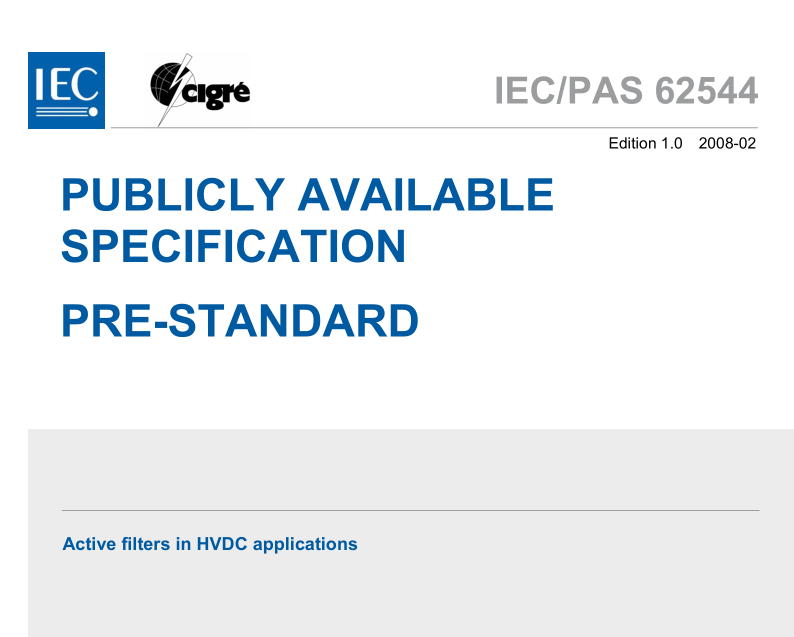IEC PAS 62544:2008 pdfダウンロード

IEC PAS 62544:2008 pdfダウンロード。Active filters in HVDC applications
1 ACTIVE DC FILTERS IN HVDC APPLICATIONS
1.1 INTRODUCING ACTIVE DC FILTERS The conversion process in an HVDC transmission system introduces harmonic currents into the DC transmission lines and the AC grid connected to the HVDC converters. These harmonic currents may cause interference in the adjacent systems, such as telecommunication equipment. The conventional solution to reduce the harmonics has been to install passive filters in HVDC converter stations [1] 1) .
When the power line consists of cables, this filtering is normally not necessary. The development of power electronics devices and digital computers has made it possible to achieve a powerful new way for further reduction of harmonic levels, namely, active filters. The active filters can be divided into two groups, active AC and DC filters. Active DC filter installations are in operation in several HVDC links and have been economically competitive due to increased demand on telephone interference levels on the DC overhead lines (Figure 1.1.1). An active AC filter is already in operation as well.
In addition to the active DC filter function of mitigating the harmonic currents on the DC overhead lines, the active AC filters may be part of several solutions in the HVDC scheme to improve reactive power exchange with the AC grid and to improve the dynamic stability. Already in the 1960s there were attempts to develop and install an active filter in a HVDC converter station in Sweden, but the project turned out unsuccessfully. In the middle of the 1980s the technological development of the presently installed active filters was initiated. Mainly two reasons make the projects successful. Primarily, the prices on semiconductors have decreased dramatically and secondly, digital computers are getting more powerful.
The reasons to develop first the active DC Filter and subsequently the active AC filter, were:
• Active AC and DC filters consist of two parts, a passive part and a corresponding active part, which are loaded with the same currents. Due to the fact that the passive AC filter is used to supply the HVDC converter demand of reactive power and thereby loaded with the fundamental current, the required rating of the DC filter active part is lower than that of the AC filter active part.
• The control philosophy for the active DC filter is less complex than for the AC one.
• The present HVDC applications where active AC filters are feasible will be limited, due to the fact that AC filters are also required to supply the HVDC converter demand of reactive power. The filter size is therefore often well above the filtering demand. In future HVDC projects a new converter technology may be applied, implying that the reactive power can be separated from the AC filters and thereby make the active AC filter more feasible. The most promising technologies are the Capacitor Commutated Converters (CCC) and the Controlled Series Capacitor Converter (CSCC), but GTO controlled converters are also able to keep the reactive power balance from the converter within a minimum.
- Previous:IEC PAS 62515:2007 pdfダウンロード
- Next:IEC PAS 62545:2008 pdfダウンロード